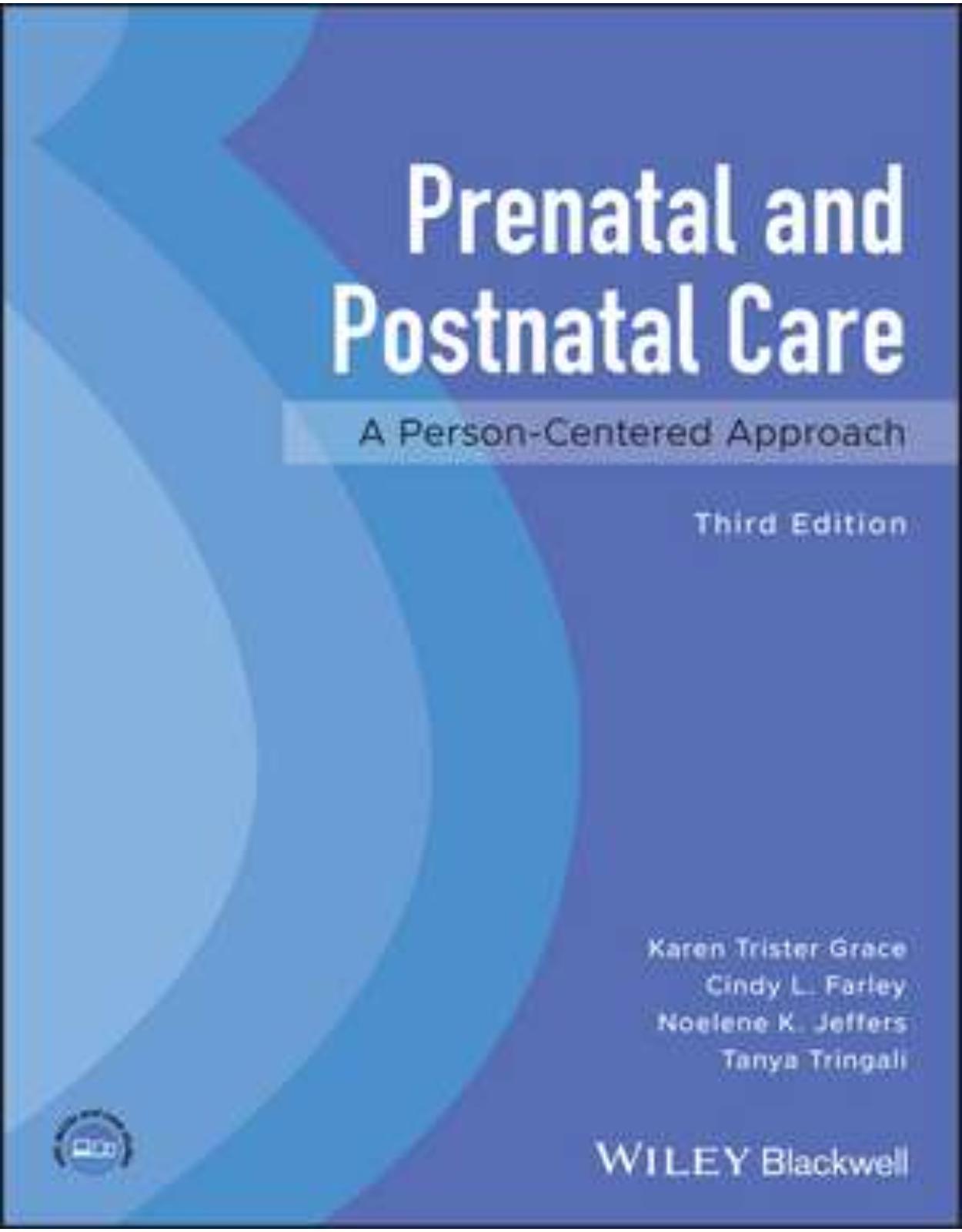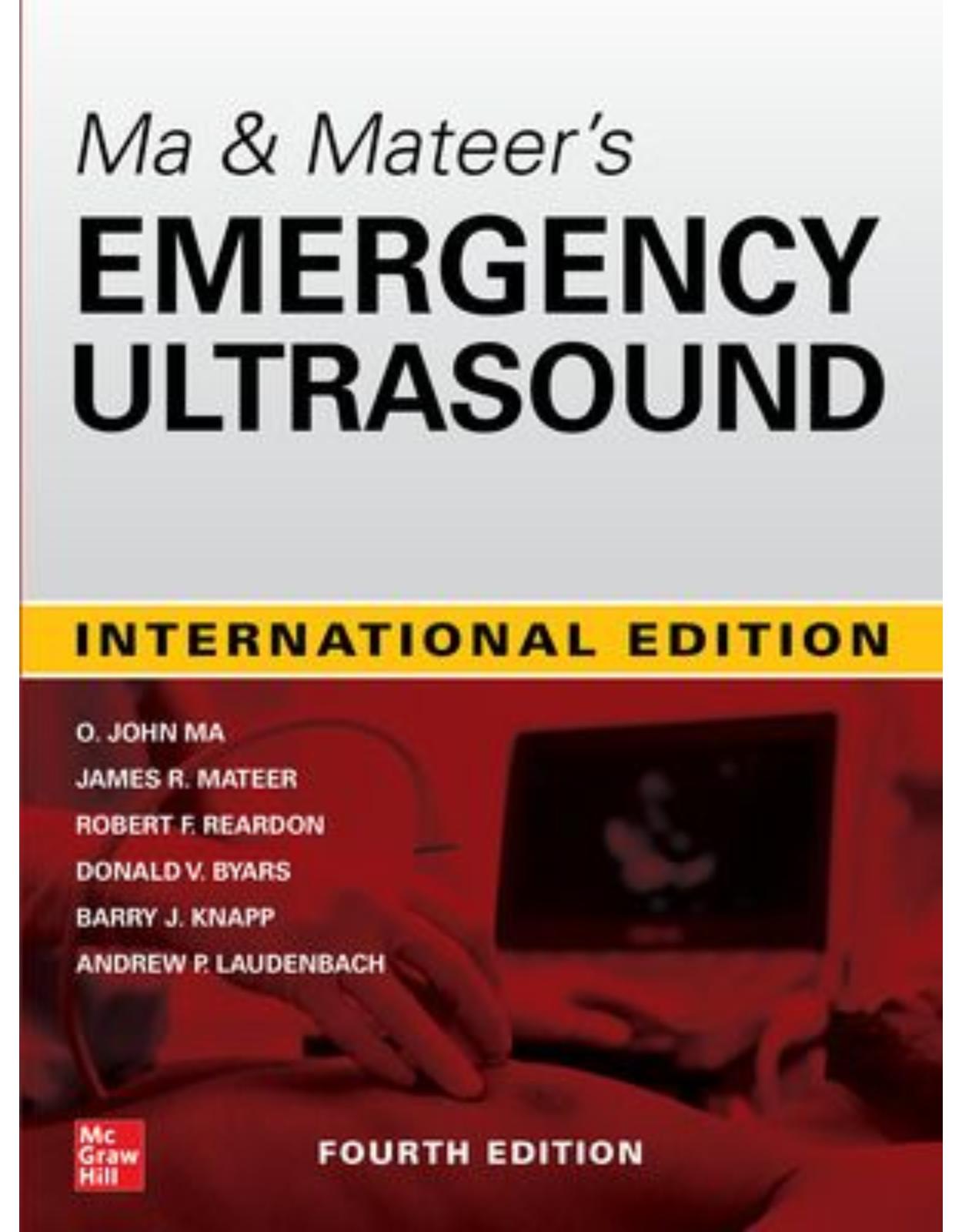
Managing Medical and Obstetric Emergencies and Trauma: A Practical Approach
Livrare gratis la comenzi peste 500 RON. Pentru celelalte comenzi livrarea este 20 RON.
Disponibilitate: La comanda in aproximativ 4 saptamani
Editura: Wiley
Limba: Engleza
Nr. pagini: 432
Coperta: Paperback
Dimensiuni: 221 x 283 x 20 mm
An aparitie: 7 July 2022
Description:
MANAGING MEDICAL AND OBSTETRIC EMERGENCIES AND TRAUMA: A PRACTICAL APPROACH
Managing Medical and Obstetric Emergencies and Trauma provides an evidence-based, structured approach to the recognition and treatment of emergencies in pregnancy. This contemporary resource provides step-by-step guidance on the knowledge, practical skills and procedures required to improve outcomes for the mother and fetus.
Now in its fourth edition, the text fully aligns with the mMOET course, and has been extensively reviewed and revised throughout. Lessons learned from mortality reports and national guidelines underpin the new material. This edition includes:
New chapters on cardiac disease, neurological emergencies and human factors
An update for obstetric teams treating pregnant trauma patients in line with modern trauma management
Revised algorithms and new illustrations
Managing Medical and Obstetric Emergencies and Trauma is a vital source of practical information presented as a systematic approach to prepare the obstetric team: obstetricians, midwives, anaesthetists and emergency physicians.
The Advanced Life Support Group (ALSG) improves outcomes for people in life-threatening situations, anywhere along the healthcare pathway, anywhere in the world. ALSG is a leading medical education charity and has delivered advanced life support training to over 225000 clinicians in 44 countries, across 5 continents, for over 25 years.
Table of contents:
PART 1: Introduction
CHAPTER 1: Introduction
CHAPTER 2: Saving mothers’ lives: lessons from the Confidential Enquiries
2.1 Introduction
2.2 How the enquiries work
2.3 Lessons from the past
2.4 Recent lessons
2.5 Direct deaths
2.6 Indirect deaths
2.7 Coincidental deaths
2.8 Quality of care
2.9 The international dimension
2.10 Summary
2.11 Further reading
CHAPTER 3: Structured approach to emergencies in the obstetric patient
3.1 Introduction
3.2 Resuscitation
3.3 Definitive care
3.4 Summary
CHAPTER 4: Human factors
4.1 Introduction
4.2 Extent of healthcare error
4.3 Causes of healthcare error
4.4 Human error
4.5 Learning from error
4.6 Communication
4.7 Team working, leadership and followership
4.8 Situation (or situational) awareness
4.9 Improving team and individual performance
4.10 Summary
4.11 Further reading
PART 2: Recognition
CHAPTER 5: Recognising the seriously sick patient
5.1 Introduction
5.2 Modified early‐warning systems
5.3 Summary
5.4 Further reading
Appendix 5.1 Blood gas interpretation
Appendix 5.2 Radiology in the pregnant woman
CHAPTER 6: Shock
6.1 Introduction
6.2 Aortocaval compression and supine hypotension syndrome
6.3 Types of shock
6.4 Symptoms and signs of shock
6.5 Principles of treatment
6.6 Summary
6.7 Further reading
CHAPTER 7: Sepsis
7.1 Introduction and definition
7.2 Sepsis in pregnancy
7.3 Pathophysiology of sepsis
7.4 Microbiology
7.5 Clinical issues and presentation
7.6 Monitoring, investigations and urgent treatment
7.7 Summary
7.8 Further reading
Appendix 7.1 Viral rash in pregnancy
CHAPTER 8: Intravenous access andfluid replacement
8.1 Intravenous access
8.2 Alternatives to peripheral venous access
8.3 Intravenous fluid administration
8.4 Types of intravenous fluid
8.5 Clinical signs guiding fluid replacement
8.6 Fluid administration in special circumstances
8.7 Summary
8.8 Further reading
CHAPTER 9: Acute cardiac disease in pregnancy
9.1 Introduction
9.2 Cardiac disease
9.3 Chest pain
9.4 Summary
9.5 Further reading
PART 3: Resuscitation
CHAPTER 10: Airway management and ventilation
10.1 Introduction
10.2 Airway assessment
10.3 Airway management
10.4 Advanced airway techniques
10.5 Management of ventilation
10.6 Summary
10.7 Further reading
Appendix 10.1 Practical procedures
CHAPTER 11: Cardiopulmonary resuscitation in the pregnant patient
11.1 Introduction
11.2 Management of CPR
11.3 Follow the advanced life support algorithm
11.4 Physiological changes in pregnancy affecting resuscitation
11.5 Perimortem caesarean section
11.6 Communication, teamwork and human factors
11.7 Summary
11.8 Further reading
CHAPTER 12: Amniotic fluid embolism
12.1 Introduction
12.2 Incidence of AFE
12.3 Clinical manifestations
12.4 Symptoms and signs
12.5 Diagnosis of AFE
12.6 Management of AFE
12.7 Summary
12.8 Further reading
CHAPTER 13: Venous thromboembolism
13.1 Introduction
13.2 Pathophysiology of thromboembolism
13.3 Clinical presentation of pulmonary embolism
13.4 Management of thromboembolism
13.5 Investigations for patients with a possible pulmonary embolism
13.6 Treatment of thromboembolism
13.7 Summary
13.8 Further reading
CHAPTER 14: Resuscitation of the neonate at birth
14.1 Introduction
14.2 Normal physiology
14.3 Pathophysiology
14.4 Equipment for newborn resuscitation
14.5 Strategy for assessing and resuscitating a neonate at birth
14.6 Laryngeal masks
14.7 Tracheal intubation
14.8 Preterm neonates
14.9 Actions in the event of poor initial response to resuscitation
14.10 Birth outside the delivery room
14.11 Communication with the parents
14.12 Summary
PART 4: Trauma
CHAPTER 15: Introduction to trauma
15.1 Introduction
15.2 Aetiology and epidemiology
15.3 Obstetric complications of trauma
15.4 Organisation of trauma care
15.5 Trauma call timeline for a pregnant trauma patient
15.6 Damage control resusucitation
15.7 Interventional radiology
15.8 Summary
15.9 Further reading
CHAPTER 16: Domestic abuse
16.1 Introduction
16.2 Domestic abuse and pregnancy
16.3 Summary
16.4 Useful contacts
16.5 Further reading
CHAPTER 17: Thoracic emergencies
17.1 Introduction
17.2 Initial assessment and management of thoracic emergencies
17.3 Life‐threatening chest injuries
17.4 Potentially life‐threatening chest injuries
17.5 Summary
17.6 Further reading
Appendix 17.1 Practical procedures
CHAPTER 18: Abdominal trauma in pregnancy
18.1 Introduction
18.2 Trauma to the uterus
18.3 Primary survey and resuscitation
18.4 Secondary survey
18.5 Summary
18.6 Further reading
CHAPTER 19: The unconscious patient
19.1 Introduction
19.2 Principles of treatment of the unconscious patient
19.3 Primary survey and resuscitation
19.4 Assessment of fetal well‐being and viability
19.5 Secondary survey
19.6 Types of head injury
19.7 Summary
19.8 Further reading
CHAPTER 20: Spine and spinal cord injuries
20.1 Introduction
20.2 Immobilisation and motion restriction techniques
20.3 Evaluation of a patient with a suspected spinal injury
20.4 Principles of treatment in spinal injuries
20.5 Summary
20.6 Further reading
CHAPTER 21: Musculoskeletal trauma
21.1 Introduction
21.2 Primary survey
21.3 Secondary survey
21.4 Summary
21.5 Further reading
CHAPTER 22: Burns
22.1 Introduction
22.2 Pathophysiology of burns
22.3 Primary survey and resuscitation
22.4 Secondary survey
22.5 Definitive care
22.6 Summary
22.7 Further reading
PART 5: Other obstetric medical and surgical emergencies
CHAPTER 23: Abdominal emergencies
23.1 Introduction
23.2 Pathophysiology of abdominal pain in pregnancy
23.3 Clinical approach to diagnosis: history, examination and investigations
23.4 Clinical management of abdominal emergencies
23.5 Summary
23.6 Further reading
CHAPTER 24: Diabetic emergencies
24.1 Introduction
24.2 Pathophysiology of DKA
24.3 Presentation of DKA
24.4 Treatment of DKA
24.5 Hypoglycaemia in pregnancy
24.6 Summary
24.7 Further reading
CHAPTER 25: Neurological emergencies
25.1 Introduction
25.2 Headache
25.3 Primary headache
25.4 Secondary headache
25.5 Differential diagnosis of seizures in pregnancy
25.6 Acute management of a seizure
25.7 Summary
25.8 Further reading
CHAPTER 26: Perinatal psychiatric illness
26.1 Introduction
26.2 Mental health problems in pregnancy
26.3 Mental health problems after delivery
26.4 Confidential Enquiries into Maternal Deaths (CEMD)
26.5 Management of mental health problems
26.6 Labour ward crises
26.7 Neonatal paediatricians
26.8 Summary
26.9 Further reading
PART 6: Obstetric emergencies
CHAPTER 27: Pre‐eclampsia and eclampsia
27.1 Introduction
27.2 Pre‐eclampsia
27.3 Management of severe pre‐eclampsia
27.4 Management of eclampsia
27.5 HELLP syndrome
27.6 Summary
27.7 Further reading
CHAPTER 28: Major obstetric haemorrhage
28.1 Introduction
28.2 Major obstetric haemorrhage (MOH)
28.3 Maternal signs of shock
28.4 Management of major obstetric haemorrhage
28.5 Patients declining blood and blood products
28.6 Summary
28.7 Further reading
CHAPTER 29: Caesarean section
29.1 Introduction
29.2 Surgical technique for caesarean section
29.3 Specific difficulties encountered at caesarean section
29.4 Audit standards
29.5 Summary
29.6 Further reading
CHAPTER 30: Abnormally invasive placenta and retained placenta
30.1 Introduction
30.2 Abnormally invasive placenta
30.3 Retained placenta
30.4 Summary
30.5 Further reading
CHAPTER 31: Uterine inversion
31.1 Introduction
31.2 Recognition of uterine inversion
31.3 Management of uterine inversion
31.4 Summary
31.5 Further reading
CHAPTER 32: Ruptured uterus
32.1 Introduction
32.2 Incidence and predisposing factors
32.3 Management of ruptured uterus
32.4 Summary
32.5 Further reading
CHAPTER 33: Ventouse and forceps delivery
33.1 Introduction
33.2 Training and simulation in obstetrics
33.3 Indications for operative vaginal delivery
33.4 Ventouse/vacuum cup
33.5 Forceps
33.6 Following on from any instrumental delivery
33.7 Supervising an instrumental delivery
33.8 Documentation and debriefing
33.9 Summary
33.10 Online resources
33.11 Further reading
CHAPTER 34: Shoulder dystocia
34.1 Introduction
34.2 Clinical risks and outcomes of shoulder dystocia
34.3 Management of shoulder dystocia
34.4 Following delivery
34.5 Medicolegal aspects
34.6 Summary
34.7 Further reading
CHAPTER 35: Umbilical cord prolapse
35.1 Introduction
35.2 Clinical management of umbilical cord prolapse
35.3 Documentation
35.4 Summary
35.5 Further reading
CHAPTER 36: Face presentation
36.1 Introduction
36.2 Clinical approach to face presentation
36.3 Summary
36.4 Further reading
CHAPTER 37: Breech delivery and external cephalic version
37.1 Introduction
37.2 External cephalic version
37.3 Vaginal breech delivery
37.4 Failure to deliver
37.5 Medicolegal matters
37.6 Summary
37.7 Further reading
CHAPTER 38: Twin pregnancy
38.1 Introduction
38.2 Clinical approach to a twin pregnancy
38.3 Intrapartum management of vaginal twin deliveries
38.4 Communication and team working
38.5 Summary
38.6 Further reading
CHAPTER 39: Complex perineal and anal sphincter trauma
39.1 Introduction
39.2 Assessment of perineal trauma
39.3 Repair of trauma
39.4 Training
39.5 Summary
39.6 Further reading
CHAPTER 40: Symphysiotomy and destructive procedures
40.1 Introduction
40.2 Symphysiotomy
40.3 Destructive procedures
40.4 Summary
40.5 Further reading
CHAPTER 41: Anaesthetic complications in obstetrics
41.1 Introduction
41.2 Difficult intubation
41.3 Regional blocks (epidural and spinal anaesthesia and analgesia)
41.4 Complications of regional anaesthesia
41.5 Complications due to local anaesthetic drugs
41.6 Serious immediate complications of local anaesthetic drugs
41.7 Complications of opioids
41.8 Complications of technique
41.9 Neurological damage
41.10 Effects of complications on the fetus
41.11 Summary
41.12 Further reading
CHAPTER 42: Triage
42.1 Introduction
42.2 Assessment of the pregnant woman
42.3 Scenarios
42.4 Summary
42.5 Further reading
CHAPTER 43: Transfer
43.1 Introduction
43.2 ACCEPT approach
43.3 Common coordination problems
43.4 Summary
43.5 Further reading
CHAPTER 44: Consent matters
44.1 Introduction
44.2 Sufficient information
44.3 Capacity
44.4 Voluntarily given consent
44.5 Who can obtain consent?
44.6 Summary
44.7 Further reading
References and further reading
Index
End User License Agreement
| An aparitie | 7 July 2022 |
| Autor | Advanced Life Support Grou, Rosamunde Burns , Kara Dent |
| Dimensiuni | 221 x 283 x 20 mm |
| Editura | Wiley |
| Format | Paperback |
| ISBN | 9781119645740 |
| Limba | Engleza |
| Nr pag | 432 |














Clientii ebookshop.ro nu au adaugat inca opinii pentru acest produs. Fii primul care adauga o parere, folosind formularul de mai jos.